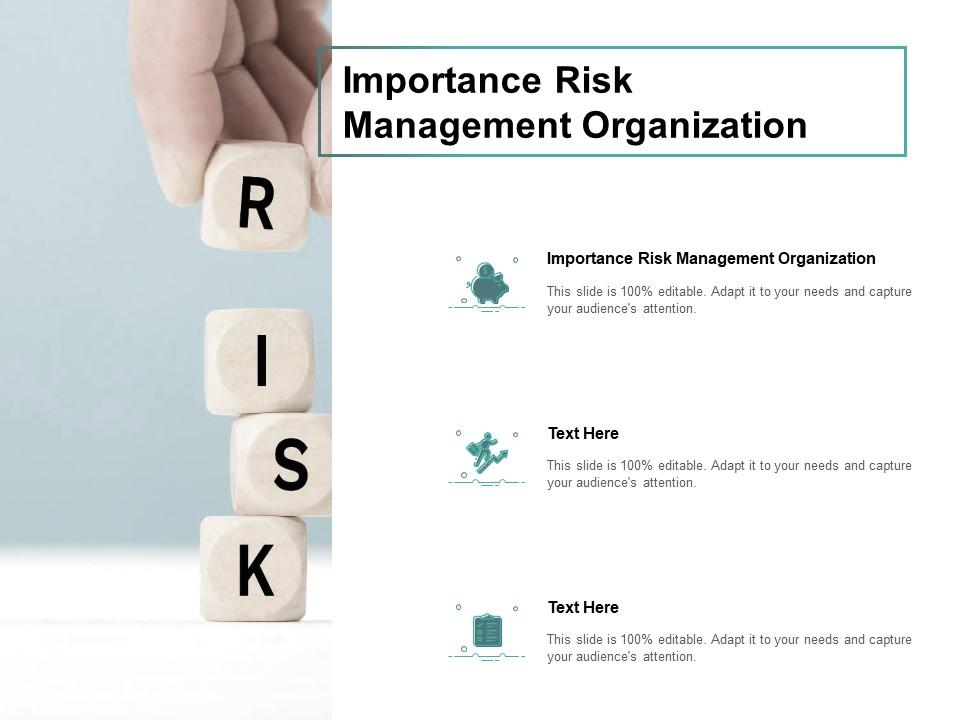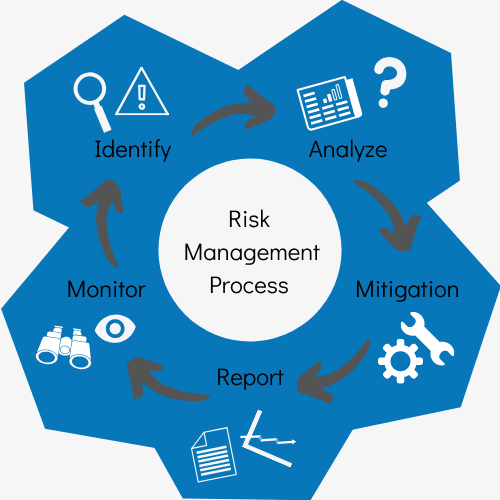Exploring the Value of Risk Management for Effective Decision-Making Approaches
In the intricate world of service, Risk Management arises as a vital variable in the decision-making process. The capability to identify possible risks and possibilities, and plan as necessary, can mean the difference in between success and failing.
Comprehending the Idea of Risk Management
Risk Management, a critical component in decision-making, is often misconstrued or oversimplified. Typically, it describes the identification, assessment, and prioritization of threats to decrease, keep an eye on, and control the chance or impact of regrettable occasions. However, it's not simply concerning protecting against negative outcomes, however additionally about recognizing prospective chances. Risk Management includes structured and regimented strategies, making use of data and insightful analyses. It needs an extensive understanding of the organization's context, purposes, and the possible dangers that could thwart them. From economic uncertainties, legal responsibilities, calculated Management errors, to crashes and natural calamities, it resolves numerous threats. Notably, effective Risk Management is not stationary; it's a continual, progressive procedure that progresses with altering conditions.
The Function of Risk Management in Decision-Making Processes
In the realm of critical planning and business procedures, Risk Management plays an important duty in decision-making procedures. It helps in identifying possible threats and uncertainties that could impact the achievement of service purposes. By tracing these threats, business can create strategies to reduce their influence, guaranteeing organization continuity and security. Risk Management therefore comes to be a crucial device in decision-making, helping leaders to make informed selections based on an extensive understanding of the threats entailed. It motivates an aggressive technique, enabling companies to prepare and expect for possible future situations. This dramatically reduces the likelihood of negative consequences, promoting more effective and reliable decision-making methods. As a result, Risk Management acts as a crucial element in the decision-making processes of any company.

Exactly How Risk Management Improves Strategic Planning
In the context of critical preparation, Risk Management plays a critical role. Launching with the identification of potential threats, it even more encompasses the execution of Risk mitigation actions. The function of Risk Management is not static but vibrant, as it demands continuous monitoring and adjusting of approaches.
Determining Potential Threats

Executing Risk Reduction
Having developed the relevance of identifying potential dangers, the following action is to check out Risk reduction. This procedure involves establishing and implementing methods to take care of determined threats properly. It is a crucial aspect of critical preparation as it boosts decision-making by reducing prospective unfavorable results. Risk mitigation techniques can range from Risk avoidance, Risk transfer, to run the risk of decrease. Each method needs to be customized to the details Risk, considering its prospective effect and the organization's Risk resistance. Furthermore, reliable Risk reduction needs a deep understanding of the Risk landscape and the potential influence of each Risk. This understanding enables companies to focus on risks and allot sources efficiently, guaranteeing that the most substantial dangers are attended to first.
Tracking and Adjusting Techniques
Though Risk mitigation is a vital action in strategic planning, continuous monitoring and change of these approaches is just as important. This continuous process allows organizations to identify new threats and reassess existing ones, guaranteeing the applied techniques stay reliable in the ever-changing business atmosphere. It additionally provides an opportunity to examine the success of the Risk Management measures, enabling changes to be made where essential, further improving calculated preparation. Reliable monitoring and adjustment need using analytics and vital performance signs (KPIs) to gauge performance. These tools provide important data-driven visite site insights that can notify calculated decision-making. Surveillance and readjusting Risk Management approaches is a crucial element for improving an organization's durability and calculated planning.
Instance Studies: Successful Risk Management and Decision-Making
In the world of organization and finance, effective Risk Management and decision-making usually serve as the columns of prosperous ventures. These cases highlight the worth of sharp Risk Management in decision-making procedures. These cases highlight the critical function of Risk Management in calculated decision-making.
Devices and Techniques for Reliable Risk Management
Browsing the intricate labyrinth of Risk Management websites requires the ideal set of tools and strategies. These devices, such as Risk registers and warm maps, aid in determining and assessing prospective threats. Methods consist of both quantitative approaches, like sensitivity evaluation, and qualitative techniques, such as SWOT evaluation. These help in prioritizing threats based upon their potential impact and likelihood. Risk action approaches, a key element of Risk Management, involve accepting, preventing, moving, or mitigating risks. Tracking and regulating risks, with regular audits and reviews, make sure that the approaches stay efficient. With these devices and techniques, decision-makers can navigate the complicated landscape of Risk Management, thereby helping with notified and reliable decision-making.
Future Fads in Risk Management and Decision-Making Methods
As we check out the substantial landscape of Risk Management, it comes to be evident that the tools and methods utilized today will certainly remain to develop. Future patterns direct in the direction of an increased dependence on modern technology, with fabricated knowledge and artificial intelligence playing significant duties. These modern technologies will enable companies to predict possible dangers with better accuracy and make more informed decisions. Furthermore, there will be a growing emphasis on resilience, not simply in managing threats but additionally in recovering from adverse circumstances. The idea of Risk culture, where every participant of an organization is conscious and entailed in Risk Management, will gain a lot more prominence. These trends herald a more comprehensive and proactive strategy towards Risk Management and decision-making.
Conclusion

Risk Management therefore becomes a vital device in decision-making, assisting leaders to make informed selections based on a detailed understanding of the dangers involved. Risk mitigation approaches can vary from Risk evasion, Risk transfer, to risk decrease (importance of risk management). Efficient Risk reduction requires a deep understanding of the Risk landscape and the prospective influence of each Risk. Risk feedback methods, a key part of Risk Management, include accepting, staying clear of, moving, or mitigating dangers. The concept of Risk culture, where every participant of an organization is aware and included in Risk Management, will get extra prominence